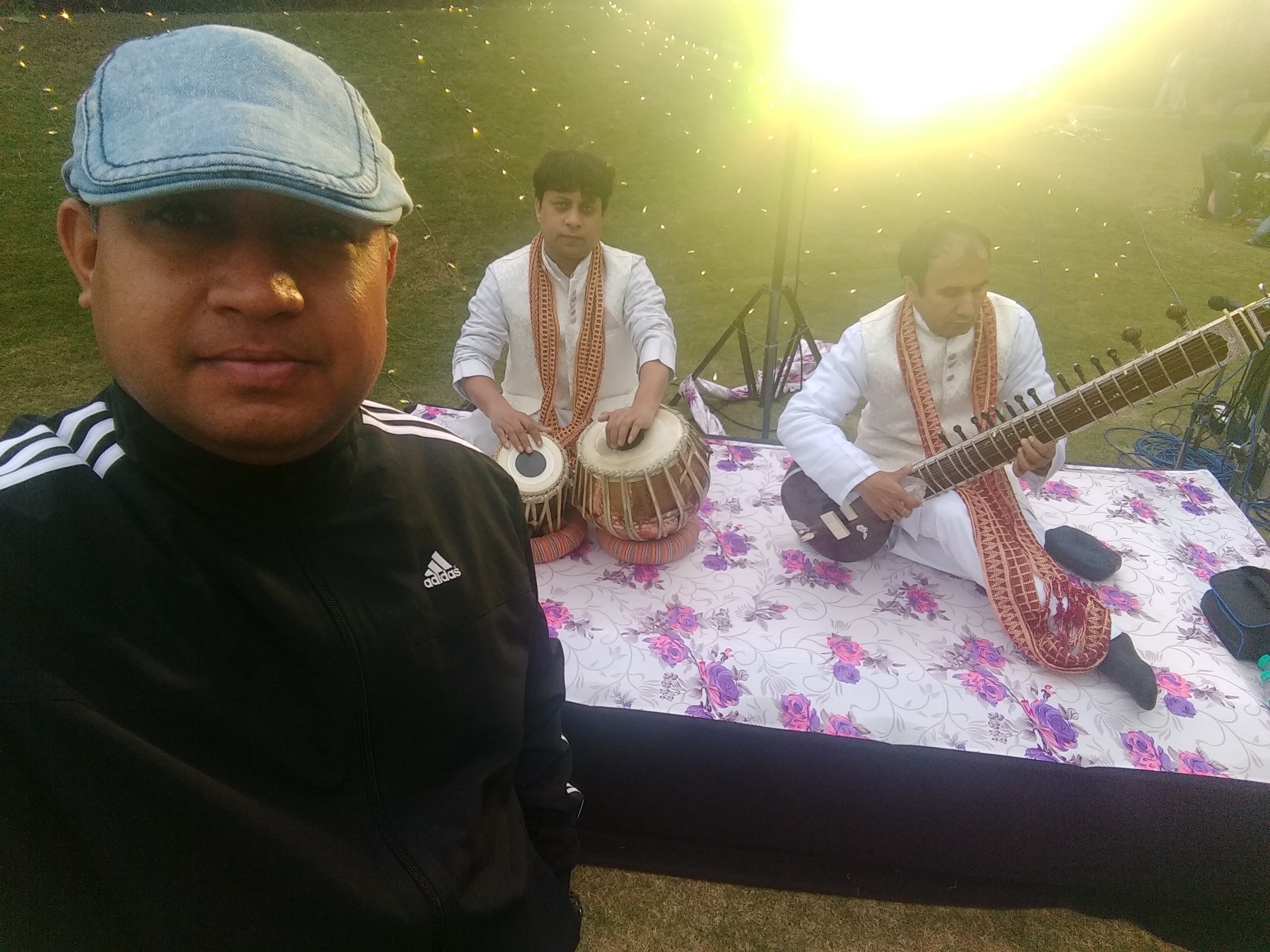\r\n The sitar is a plucked stringed instrument, originating from the Indian subcontinent, used in Hindustani classical music. The instrument was invented in medieval India and flourished in the 16th and 17th centuries and arrived at its present form in 18th-century India.
\r\n\r\n
\r\n\r\n The instrument is balanced between the player's left foot and right knee. The hands move freely without having to carry any of the instrument's weight. The player plucks the string using a metallic pick or plectrum called a mizraab. The thumb stays anchored on the top of the fretboard just above the main gourd. Generally, only the index and middle fingers are used for fingering although a few players occasionally use the third. A specialized technique called "meend" involves pulling the main melody string down over the bottom portion of the sitar's curved frets, with which the sitarist can achieve a seven semitone range of microtonal notes (however, because of the sitar's movable frets, sometimes a fret may be set to a microtone already, and no bending would be required). Adept players bring in charisma through the use of special techniques like Kan, Krintan, Murki, Zamzama etc. They also use special Mizrab Bol-s, as in Misrabani and create Chhand-s even in odd-numbered Tal-s like Jhoomra.
\r\n\r\n
\r\n\r\n For more info Click Here
\r\n\r\n
\r\n\r\n or call us at +91-9313770610




